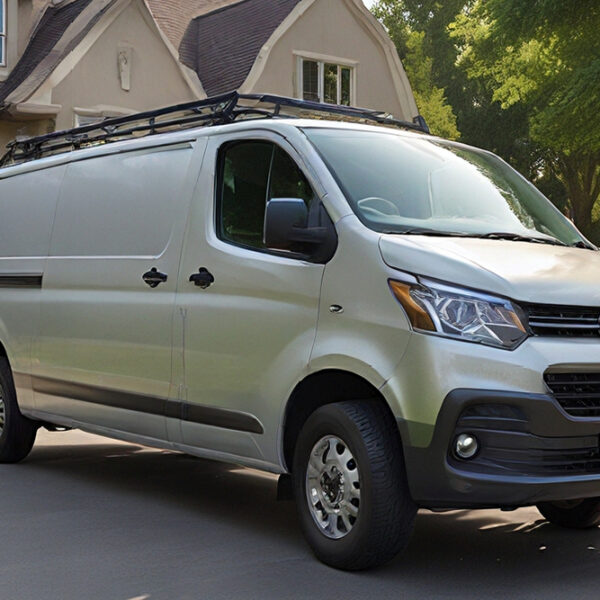8 Tips To Buy a Used Van
Over the last few years, there has been a significant upsurge in the number of people opting to live in vans and motorhomes rather than traditional houses. Their conventional use as vehicles and unconventional use as motorhomes has contributed to the renewed popularity of vans across the country. Since buying a new van can be a significant investment with costs exceeding $20,000, many people opt for a used van that meets their needs.

Tips to buy a used van
1. Check out private sellers or dealerships
To kickstart the buying process, one must begin by scouting for certified or quality used vans. There are several sources to rely on here, from private sellers to established dealerships.
- Online
Depending on one’s budget, one can consider checking out online marketplaces with search terms like “van sale near me under 5000” or “van sale near my location under 10,000” to get optimal results. Alternatively, a simple browser search with the words “vans for sale near my location under $5,000” will also pull up several results. This is a good place to start one’s search. - Dealerships
Visit the local used car dealerships to see what they have to offer. Although one may find that their options are limited here, they will be in a better position to make an informed purchase. Some dealerships also run certified used car programs, which may offer extended warranties to safeguard one’s purchase, among other perks. - Auctions
Those looking to get a good deal on used vans must watch out for bank or repossessed auctions. These happen at both local and municipal levels, from private as well as public lending institutions.
2. Check the manufacturer, year, and mileage
Start by checking the van’s model, make, and year to better understand what it will likely be priced at. Then, check its mileage. According to expert estimates, most vans travel about 15,000–20,000 miles annually. Vehicles that put in anything above that average may warrant a discount due to significant wear and tear.
3. Go through the vehicle history report
The van’s history report is a good starting point for learning more about its past. It holds records such as accidents, maintenance, and repairs, offering insights into its performance and flagging any potential issues one may face with the van. Most sellers have this ready on hand to improve their chances of a sale, so be sure to ask for it.
This is also a good time to verify the vehicle’s ownership status. Some individuals may have physical possession of a van without being legally entitled to make the sale. Being careful can help one avoid falling for scams or getting into legal trouble.
4. Perform all necessary checks
When buying a used vehicle, one must inspect the car thoroughly to ensure they are making a sound purchase.
- Check the ground and undercarriage for any signs of leaks or other problems.
- Look for signs of corrosion or rust under the hood. These indicate how well the van has been maintained.
- If the belts show signs of fraying, they will need to be replaced soon. Factor these expenses into the final cost of the vehicle.
- Ensure that the levels of transmission fuel are high. A burnt smell here may be a sign of overheating.
- If the level of brake fluid is less than ideal, it may indicate that the brakes need to be repaired or replaced.
- Check if the battery has any frayed cables, damage, or rust; this may be a warning sign.
- Verify that all the internal and external lights are in working order.
- Check for odd smells in the van. Open the cabinets to look for mold growth and water damage.
5. Inspect the tires for wear patterns
Try the toonie tire test to check the tire tread depth when inspecting the car. To do so, take the toonie and place it on every tire. If the tread reaches the bear’s paws, the tires are quite fresh and likely have a lot of life left in them. If the treads reach the silver part, they show signs of wear but remain suitable for driving. If the treads only cover half of the letters, replacement of the tires is required. Performing this test before purchasing a used van will help potential buyers understand the upcoming expenses and negotiate the final purchase price accordingly.
6. Have it inspected professionally
While a thorough personal inspection is a given, buyers must also commission a professional check by a mechanic for the van. They may be able to identify any problems in the vehicle, offering a better chance of negotiation and steering clear of risky purchases.
7. Take a test drive
Ask for a test drive before finalizing the booking on any used van. This will help one get a better feel for the car’s performance and discover any potential problems with it. Try to park, reverse, and move the vehicle around in different circumstances to understand its maneuverability and determine one’s comfort level with it.
8. Finalize the sale
Every province in the country has a different rule regarding finalizing the van sale, so be sure to read up on these beforehand. Ensure that one has all the paperwork ready, including the bill of sale, transfer of ownership, insurance, and driver’s license.





